Hiroyuki Hanada
Distributionally Robust Active Learning for Gaussian Process Regression
Feb 24, 2025Abstract:Gaussian process regression (GPR) or kernel ridge regression is a widely used and powerful tool for nonlinear prediction. Therefore, active learning (AL) for GPR, which actively collects data labels to achieve an accurate prediction with fewer data labels, is an important problem. However, existing AL methods do not theoretically guarantee prediction accuracy for target distribution. Furthermore, as discussed in the distributionally robust learning literature, specifying the target distribution is often difficult. Thus, this paper proposes two AL methods that effectively reduce the worst-case expected error for GPR, which is the worst-case expectation in target distribution candidates. We show an upper bound of the worst-case expected squared error, which suggests that the error will be arbitrarily small by a finite number of data labels under mild conditions. Finally, we demonstrate the effectiveness of the proposed methods through synthetic and real-world datasets.
Generalized Kernel Inducing Points by Duality Gap for Dataset Distillation
Feb 18, 2025Abstract:We propose Duality Gap KIP (DGKIP), an extension of the Kernel Inducing Points (KIP) method for dataset distillation. While existing dataset distillation methods often rely on bi-level optimization, DGKIP eliminates the need for such optimization by leveraging duality theory in convex programming. The KIP method has been introduced as a way to avoid bi-level optimization; however, it is limited to the squared loss and does not support other loss functions (e.g., cross-entropy or hinge loss) that are more suitable for classification tasks. DGKIP addresses this limitation by exploiting an upper bound on parameter changes after dataset distillation using the duality gap, enabling its application to a wider range of loss functions. We also characterize theoretical properties of DGKIP by providing upper bounds on the test error and prediction consistency after dataset distillation. Experimental results on standard benchmarks such as MNIST and CIFAR-10 demonstrate that DGKIP retains the efficiency of KIP while offering broader applicability and robust performance.
Distributionally Robust Coreset Selection under Covariate Shift
Jan 24, 2025Abstract:Coreset selection, which involves selecting a small subset from an existing training dataset, is an approach to reducing training data, and various approaches have been proposed for this method. In practical situations where these methods are employed, it is often the case that the data distributions differ between the development phase and the deployment phase, with the latter being unknown. Thus, it is challenging to select an effective subset of training data that performs well across all deployment scenarios. We therefore propose Distributionally Robust Coreset Selection (DRCS). DRCS theoretically derives an estimate of the upper bound for the worst-case test error, assuming that the future covariate distribution may deviate within a defined range from the training distribution. Furthermore, by selecting instances in a way that suppresses the estimate of the upper bound for the worst-case test error, DRCS achieves distributionally robust training instance selection. This study is primarily applicable to convex training computation, but we demonstrate that it can also be applied to deep learning under appropriate approximations. In this paper, we focus on covariate shift, a type of data distribution shift, and demonstrate the effectiveness of DRCS through experiments.
Conditional Latent Space Molecular Scaffold Optimization for Accelerated Molecular Design
Nov 03, 2024Abstract:The rapid discovery of new chemical compounds is essential for advancing global health and developing treatments. While generative models show promise in creating novel molecules, challenges remain in ensuring the real-world applicability of these molecules and finding such molecules efficiently. To address this, we introduce Conditional Latent Space Molecular Scaffold Optimization (CLaSMO), which combines a Conditional Variational Autoencoder (CVAE) with Latent Space Bayesian Optimization (LSBO) to modify molecules strategically while maintaining similarity to the original input. Our LSBO setting improves the sample-efficiency of our optimization, and our modification approach helps us to obtain molecules with higher chances of real-world applicability. CLaSMO explores substructures of molecules in a sample-efficient manner by performing BO in the latent space of a CVAE conditioned on the atomic environment of the molecule to be optimized. Our experiments demonstrate that CLaSMO efficiently enhances target properties with minimal substructure modifications, achieving state-of-the-art results with a smaller model and dataset compared to existing methods. We also provide an open-source web application that enables chemical experts to apply CLaSMO in a Human-in-the-Loop setting.
Distributionally Robust Safe Sample Screening
Jun 10, 2024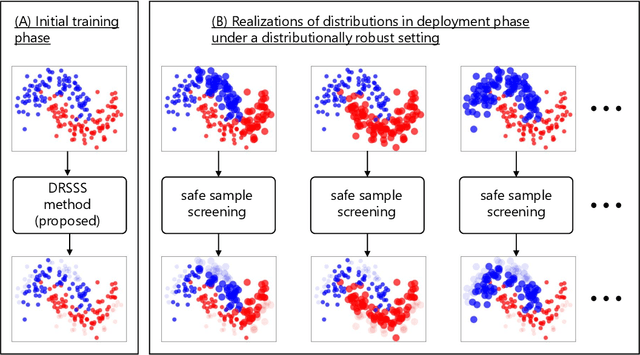
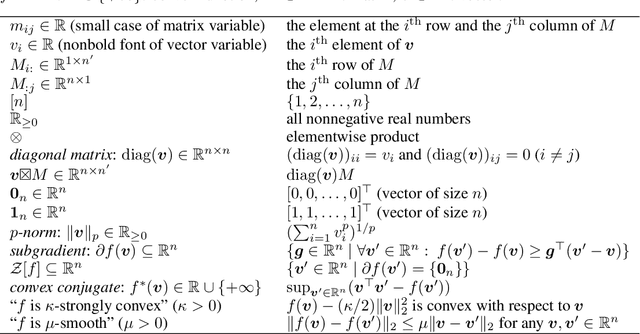

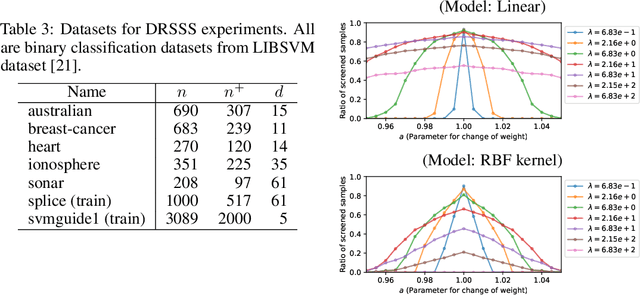
Abstract:In this study, we propose a machine learning method called Distributionally Robust Safe Sample Screening (DRSSS). DRSSS aims to identify unnecessary training samples, even when the distribution of the training samples changes in the future. To achieve this, we effectively combine the distributionally robust (DR) paradigm, which aims to enhance model robustness against variations in data distribution, with the safe sample screening (SSS), which identifies unnecessary training samples prior to model training. Since we need to consider an infinite number of scenarios regarding changes in the distribution, we applied SSS because it does not require model training after the change of the distribution. In this paper, we employed the covariate shift framework to represent the distribution of training samples and reformulated the DR covariate-shift problem as a weighted empirical risk minimization problem, where the weights are subject to uncertainty within a predetermined range. By extending the existing SSS technique to accommodate this weight uncertainty, the DRSSS method is capable of reliably identifying unnecessary samples under any future distribution within a specified range. We provide a theoretical guarantee for the DRSSS method and validate its performance through numerical experiments on both synthetic and real-world datasets.
Distributionally Robust Safe Screening
Apr 25, 2024Abstract:In this study, we propose a method Distributionally Robust Safe Screening (DRSS), for identifying unnecessary samples and features within a DR covariate shift setting. This method effectively combines DR learning, a paradigm aimed at enhancing model robustness against variations in data distribution, with safe screening (SS), a sparse optimization technique designed to identify irrelevant samples and features prior to model training. The core concept of the DRSS method involves reformulating the DR covariate-shift problem as a weighted empirical risk minimization problem, where the weights are subject to uncertainty within a predetermined range. By extending the SS technique to accommodate this weight uncertainty, the DRSS method is capable of reliably identifying unnecessary samples and features under any future distribution within a specified range. We provide a theoretical guarantee of the DRSS method and validate its performance through numerical experiments on both synthetic and real-world datasets.
Efficient Model Selection for Predictive Pattern Mining Model by Safe Pattern Pruning
Jun 23, 2023Abstract:Predictive pattern mining is an approach used to construct prediction models when the input is represented by structured data, such as sets, graphs, and sequences. The main idea behind predictive pattern mining is to build a prediction model by considering substructures, such as subsets, subgraphs, and subsequences (referred to as patterns), present in the structured data as features of the model. The primary challenge in predictive pattern mining lies in the exponential growth of the number of patterns with the complexity of the structured data. In this study, we propose the Safe Pattern Pruning (SPP) method to address the explosion of pattern numbers in predictive pattern mining. We also discuss how it can be effectively employed throughout the entire model building process in practical data analysis. To demonstrate the effectiveness of the proposed method, we conduct numerical experiments on regression and classification problems involving sets, graphs, and sequences.
Generalized Low-Rank Update: Model Parameter Bounds for Low-Rank Training Data Modifications
Jun 22, 2023Abstract:In this study, we have developed an incremental machine learning (ML) method that efficiently obtains the optimal model when a small number of instances or features are added or removed. This problem holds practical importance in model selection, such as cross-validation (CV) and feature selection. Among the class of ML methods known as linear estimators, there exists an efficient model update framework called the low-rank update that can effectively handle changes in a small number of rows and columns within the data matrix. However, for ML methods beyond linear estimators, there is currently no comprehensive framework available to obtain knowledge about the updated solution within a specific computational complexity. In light of this, our study introduces a method called the Generalized Low-Rank Update (GLRU) which extends the low-rank update framework of linear estimators to ML methods formulated as a certain class of regularized empirical risk minimization, including commonly used methods such as SVM and logistic regression. The proposed GLRU method not only expands the range of its applicability but also provides information about the updated solutions with a computational complexity proportional to the amount of dataset changes. To demonstrate the effectiveness of the GLRU method, we conduct experiments showcasing its efficiency in performing cross-validation and feature selection compared to other baseline methods.
Fast and More Powerful Selective Inference for Sparse High-order Interaction Model
Jun 09, 2021
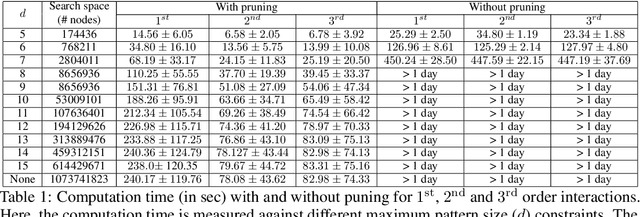


Abstract:Automated high-stake decision-making such as medical diagnosis requires models with high interpretability and reliability. As one of the interpretable and reliable models with good prediction ability, we consider Sparse High-order Interaction Model (SHIM) in this study. However, finding statistically significant high-order interactions is challenging due to the intrinsic high dimensionality of the combinatorial effects. Another problem in data-driven modeling is the effect of "cherry-picking" a.k.a. selection bias. Our main contribution is to extend the recently developed parametric programming approach for selective inference to high-order interaction models. Exhaustive search over the cherry tree (all possible interactions) can be daunting and impractical even for a small-sized problem. We introduced an efficient pruning strategy and demonstrated the computational efficiency and statistical power of the proposed method using both synthetic and real data.
Supervised sequential pattern mining of event sequences in sport to identify important patterns of play: an application to rugby union
Oct 29, 2020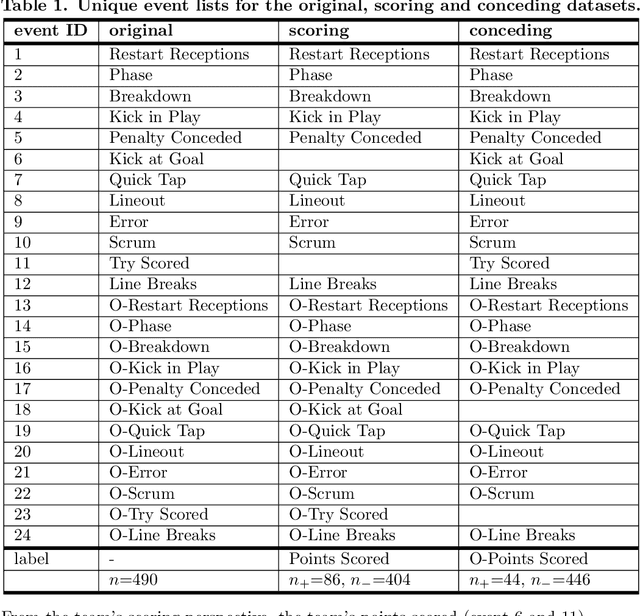
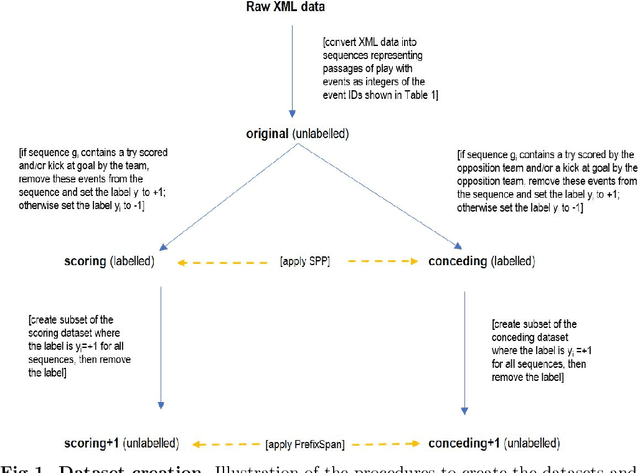
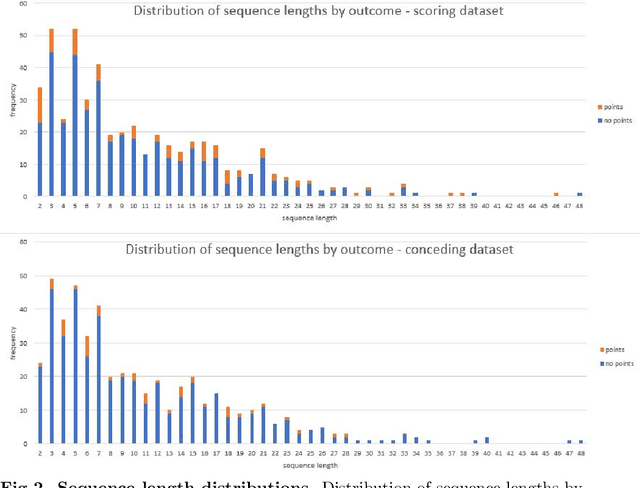
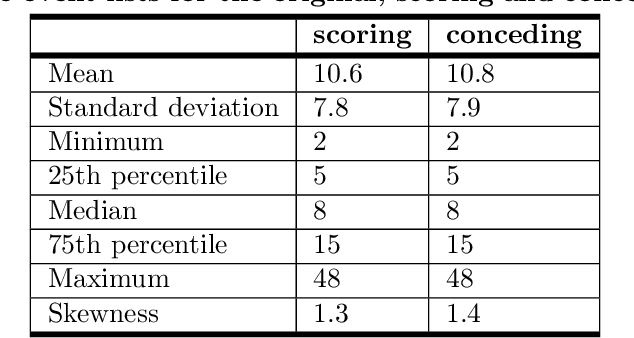
Abstract:Given a set of sequences comprised of time-ordered events, sequential pattern mining is useful to identify frequent sub-sequences from different sequences or within the same sequence. However, in sport, these techniques cannot determine the importance of particular patterns of play to good or bad outcomes, which is often of greater interest to coaches. In this study, we apply a supervised sequential pattern mining algorithm called safe pattern pruning (SPP) to 490 labelled event sequences representing passages of play from one rugby team's matches from the 2018 Japan Top League, and then evaluate the importance of the obtained sub-sequences to points-scoring outcomes. Linebreaks, successful lineouts, regained kicks in play, repeated phase-breakdown play, and failed opposition exit plays were identified as important patterns of play for the team scoring. When sequences were labelled with points scoring outcomes for the opposition teams, opposition team linebreaks, errors made by the team, opposition team lineouts, and repeated phase-breakdown play by the opposition team were identified as important patterns of play for the opposition team scoring. By virtue of its supervised nature and pruning properties, SPP obtained a greater variety of generally more sophisticated patterns than the well-known unsupervised PrefixSpan algorithm.
 Add to Chrome
Add to Chrome Add to Firefox
Add to Firefox Add to Edge
Add to Edge